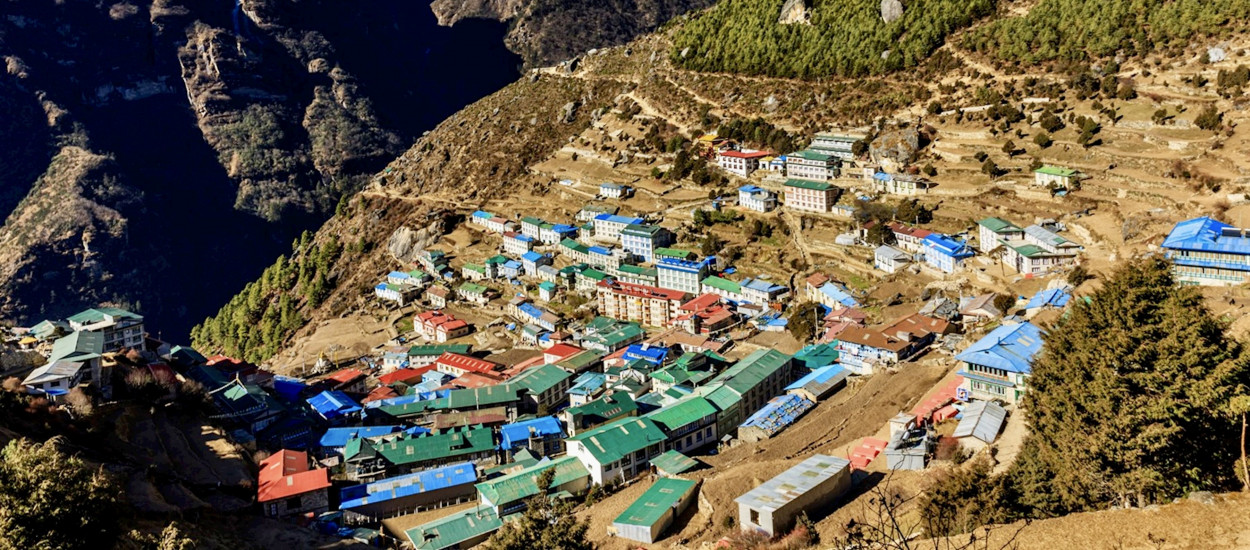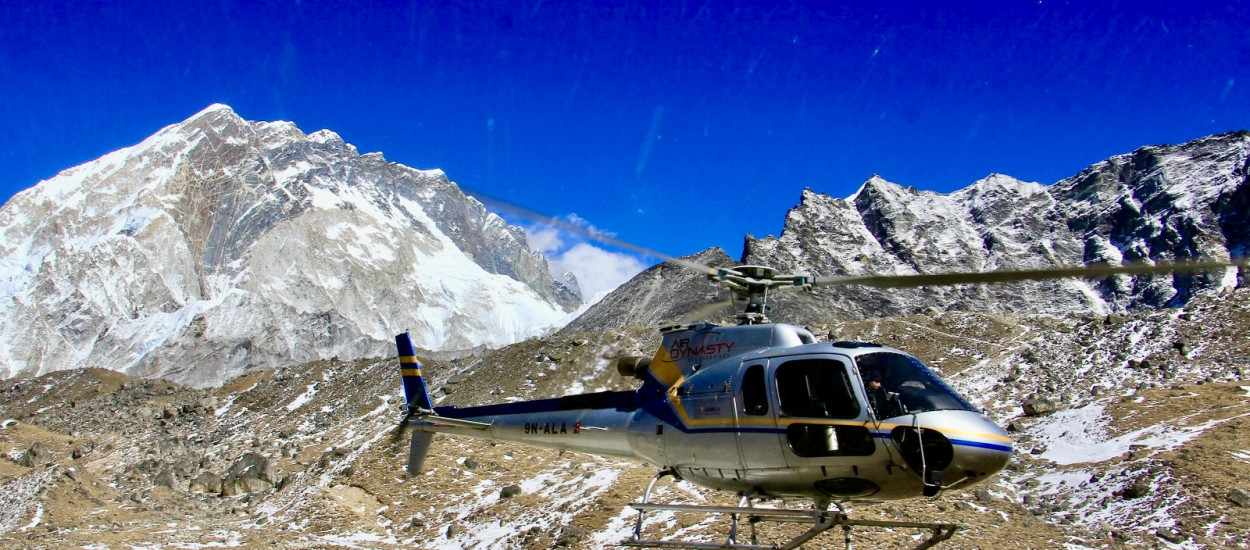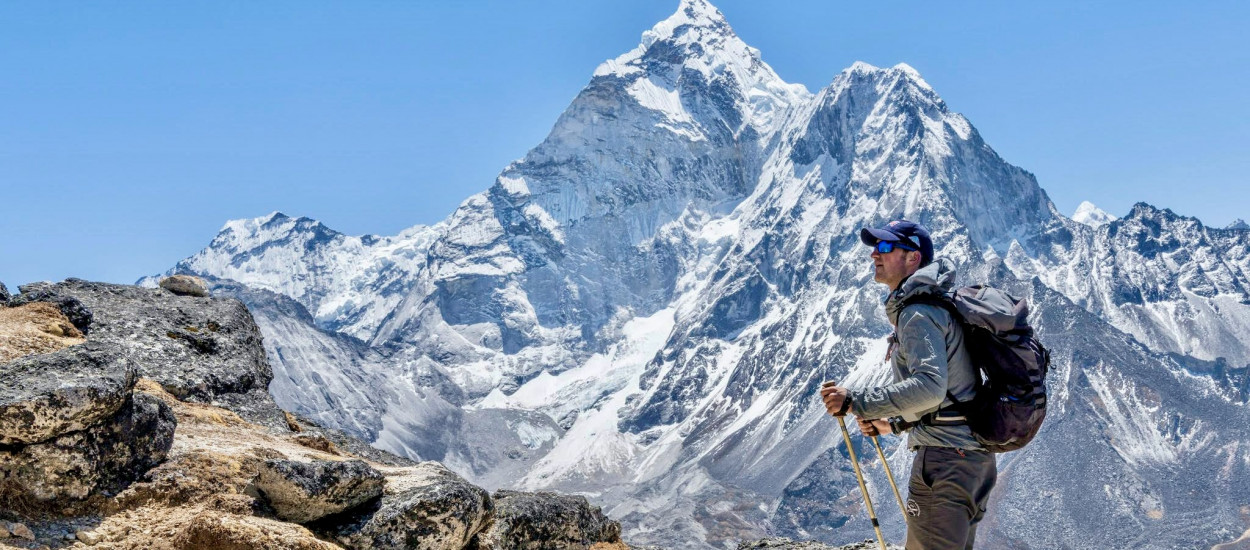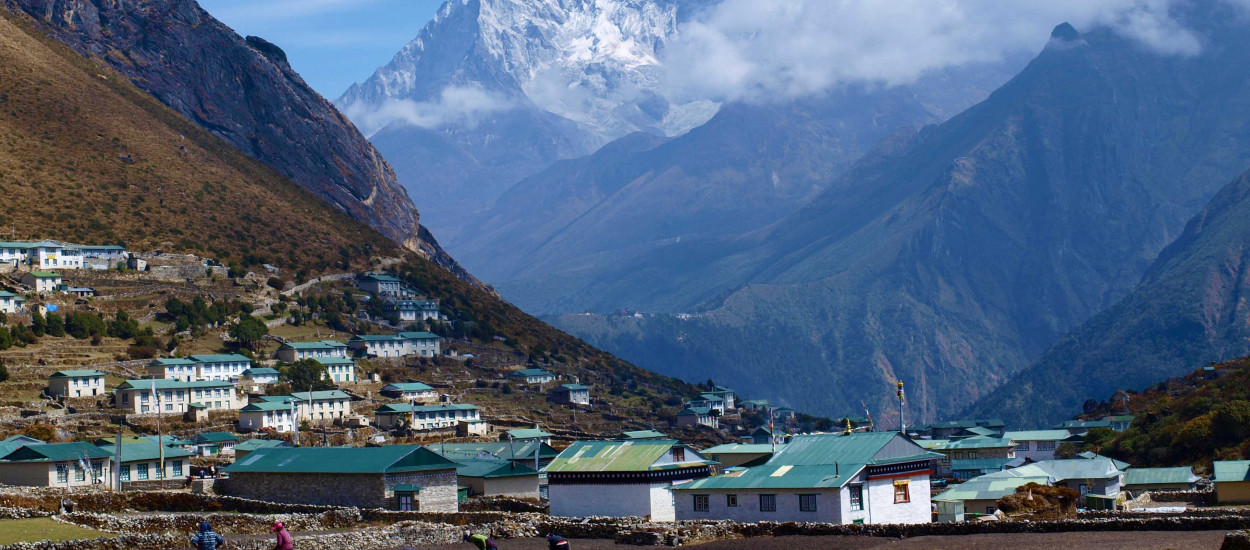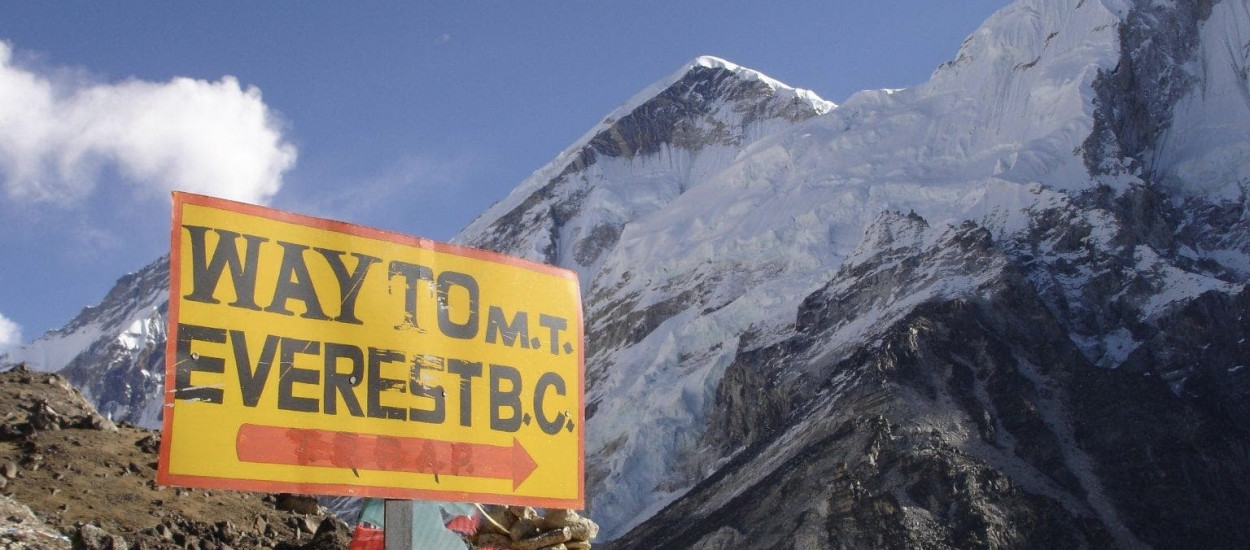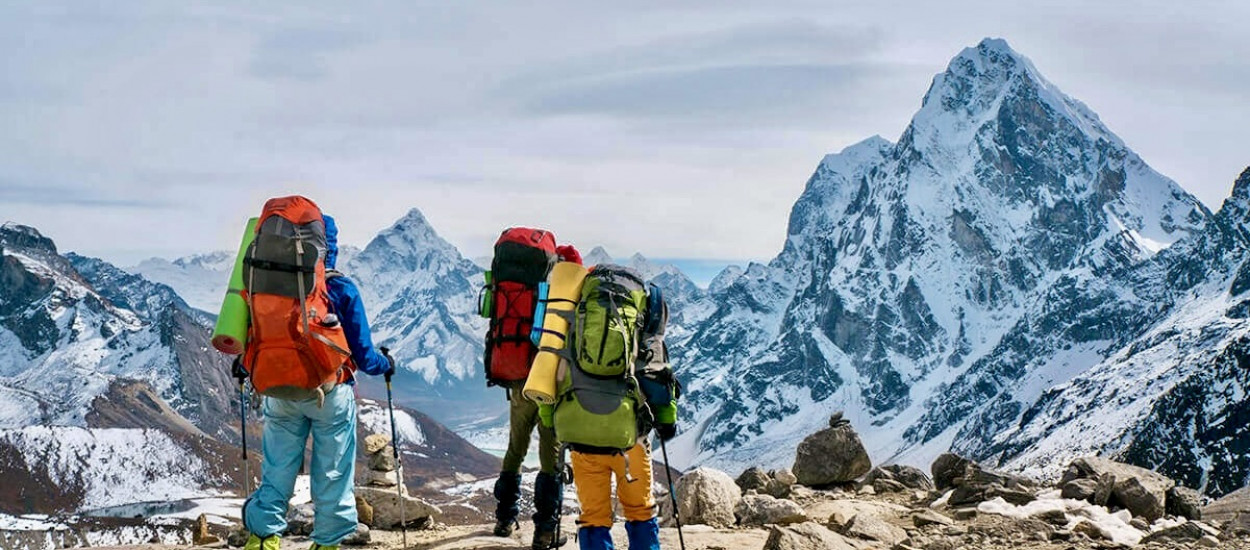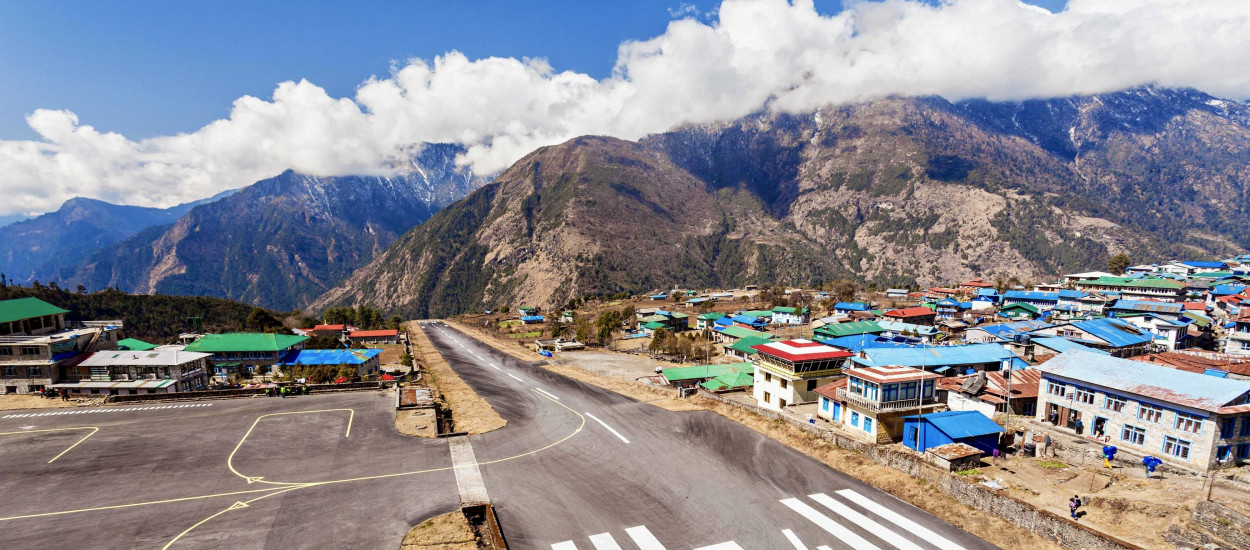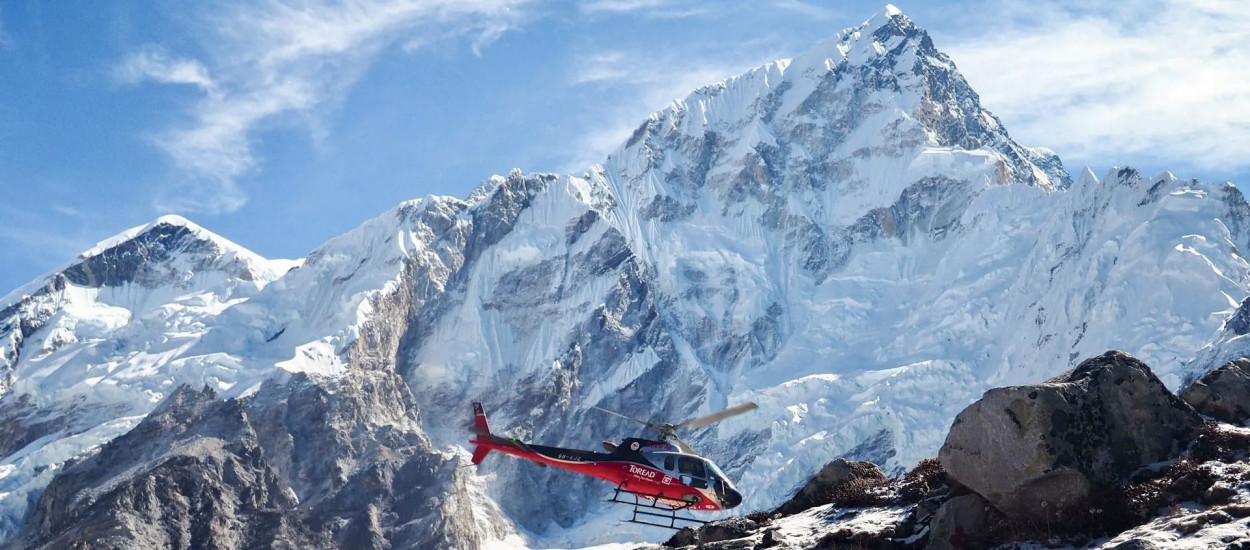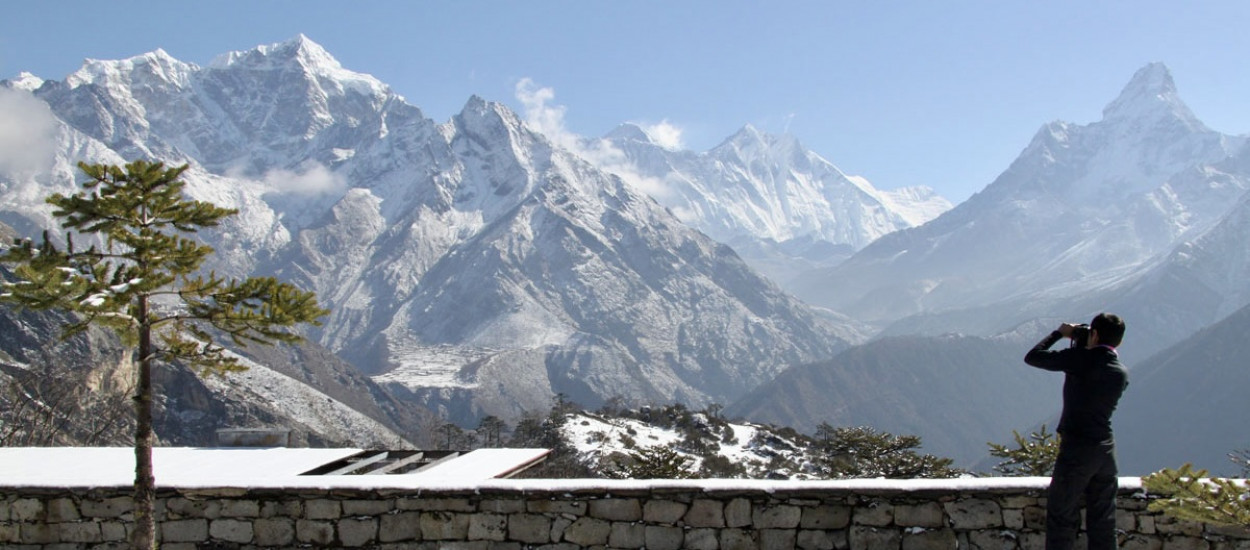Good to Know
Altitude during the Luxury Everest Base Camp Trek with Helicopter flight Back from Base Camp
The Luxury Everest Base Camp Trek with Helicopter Flight Back from Base Camp traverses through some of the most magnificent terrains in the Himalayas, reaching significant altitudes that offer breathtaking views and a unique trekking experience. Here are the major altitudes reached during the trek:
-
Lukla: The trek begins in Lukla, situated at an altitude of 2,860 meters. This small town is the gateway for most treks into the Everest region.
-
Namche Bazaar: Often referred to as the gateway to the high Himalayas, Namche Bazaar sits at 3,440 meters. It is a crucial acclimatization stop with vibrant local culture and stunning mountain views.
-
Pangboche: At 3,985 meters, Pangboche is one of the highest year-round settled villages in the valley and offers closer views of Everest and Ama Dablam.
-
Dingboche: Known for its stunning array of fields enclosed by stone walls, Dingboche is located at 4,360 meters and serves as another critical acclimatization stop.
-
Lobuche: Positioned at 4,940 meters, Lobuche is a major stop on the way to Everest Base Camp, with trails leading to the Khumbu Glacier.
-
Gorakshep: The last stop before reaching the base camp, Gorakshep is situated at 5,164 meters and offers lodgings and breathtaking views.
-
Everest Base Camp: The highlight of the trek, Everest Base Camp, is located at 5,364 meters. It provides a spectacular up-close view of the Khumbu Icefall and the surrounding high peaks.
-
Kala Patthar: Often a sunrise destination for the best views of Everest, Kala Patthar reaches an altitude of 5,545 meters and provides the most accessible point to view Mount Everest from base to peak.
The trek's progression to higher altitudes is designed to aid acclimatization and provide trekkers with the best possible adaptation to the thinning air. Each location on the itinerary not only offers a unique perspective of the Himalayas but also ensures that trekkers experience the cultural and natural beauty of Nepal. The helicopter flight from Everest Base Camp back to Lukla is the cherry on top, giving trekkers a thrilling aerial farewell to the majestic peaks.
Porter Service the Luxury Everest Base Camp Trek with Helicopter flight Back from Base Camp
The Porter Service provided during the Luxury Everest Base Camp Trek with Helicopter Flight Back from Base Camp is an essential component of the trekking experience, designed to enhance the comfort and enjoyment of trekkers. Understanding the value of this service is crucial for anyone planning this ambitious journey.
Key Features of the Porter Service
-
Load Management: Porters play a vital role in carrying your luggage, allowing you to trek with just a light daypack. This service is especially valuable given the challenging terrain and high altitudes encountered on the route to Everest Base Camp.
-
Experienced and Knowledgeable Staff: The porters are not only skilled in load management but are also familiar with the local terrain, conditions, and safety measures. They contribute significantly to the overall safety and success of the trek.
-
Cultural Interaction: Employing local porters also provides a unique opportunity for cultural exchange. These individuals are often from nearby villages and provide insight into the local customs, culture, and environment, enriching the trekking experience.
-
Economic Support: By hiring local porters, the trek contributes economically to the local community, providing vital employment opportunities in the region.
-
Safety and Comfort: The porter service ensures that trekkers can focus on the scenery and personal experience without the burden of heavy equipment, enhancing both safety and comfort during the trek. Porters are trained to navigate the rugged terrain efficiently and safely, contributing to a smoother and more enjoyable trek.
-
Compliance with Ethical Standards: The porter service adheres to responsible trekking ethics, ensuring fair wages, adequate equipment, and reasonable load limits to support the health and well-being of the porters.
For those opting for the Luxury Everest Base Camp Trek, the porter service is not just a logistical solution but a way to deepen the trekking experience, ensuring that every participant can fully engage with the breathtaking environments while supporting local communities in a meaningful way. This thoughtful inclusion of porter services highlights the commitment to luxury and responsible tourism, making the journey as rewarding for the trekkers as it is beneficial for the local people.
Permits for the Luxury Everest Base Camp Trek with Helicopter flight Back from Base Camp
For anyone embarking on the Luxury Everest Base Camp Trek with Helicopter Flight Back from Base Camp, obtaining the necessary permits is a crucial step in the preparation process. These permits are required to ensure the protection of the region's unique environment and to contribute to local conservation efforts. Here's a detailed look at the required permits:
Required Permits
-
Sagarmatha National Park Permit: This permit is mandatory for anyone trekking within the Everest region, which encompasses Everest Base Camp. The Sagarmatha National Park is a UNESCO World Heritage site, and the fees collected help maintain the park's natural beauty and support conservation efforts.
-
TIMS Card (Trekkers' Information Management System): The TIMS Card is required for all trekkers in Nepal and is used to ensure the safety and security of trekkers. The card helps to keep track of trekkers and aid in rescue operations in case of emergencies.
How to Obtain These Permits
-
Sagarmatha National Park Permit can be obtained in Kathmandu at the Nepal Tourism Board office or at the Monjo entry point to the park. For those arranging their trek through a tour operator like Relax Getaways, the company typically handles this process.
-
TIMS Card can also be acquired from the Nepal Tourism Board in Kathmandu. The process involves filling out a form with your trekking route, expected dates, and some personal information.
Costs and Considerations
-
The cost of the Sagarmatha National Park Permit and the TIMS Card varies depending on the season and whether the trekker is part of a group or trekking solo. Costs can also vary for SAARC nationals versus other international visitors.
-
It is advisable to arrange these permits in advance through your trekking company, which can streamline the process and ensure that all paperwork is handled correctly.
Why These Permits are Important
- Obtaining these permits is not only a legal requirement but also a contribution to the preservation of the Everest region. The fees go towards maintaining trail infrastructure, conservation projects, and supporting the local communities that make sustainable tourism possible.
For trekkers choosing the Luxury Everest Base Camp Trek, these permits ensure that their journey is compliant with local regulations and contributes positively to the region's environmental sustainability and community welfare. This attention to detail and adherence to local laws enhances the overall trekking experience, ensuring that the majestic beauty of the Himalayas can be preserved for future generations.
Preparation for the Luxury Everest Base Camp Trek with Helicopter flight Back from Base Camp
Preparing for the Luxury Everest Base Camp Trek with Helicopter Flight Back from Base Camp is crucial to ensuring a successful and enjoyable experience. This trek involves challenging high-altitude hikes and varying weather conditions, so thorough preparation is essential. Here’s how to get ready for this adventure:
Physical Preparation
-
Fitness Training: Start a fitness regimen that includes cardiovascular exercises like running, cycling, or swimming to improve stamina. Include strength training and hiking with a weighted backpack to simulate trek conditions.
-
Acclimatization: Plan for acclimatization days in your trekking itinerary to adjust to high altitudes. This is critical to avoid altitude sickness.
Gear and Equipment
-
Proper Clothing: Invest in high-quality trekking gear. Layering is key, so bring thermal base layers, fleece jackets, and a waterproof and windproof outer layer.
-
Footwear: Durable, well-fitting trekking boots are a must. Break them in several weeks before the trek to avoid blisters.
-
Essential Gear: Include a sleeping bag suitable for sub-zero temperatures, a high-quality backpack, and trekking poles. Sunglasses, sunscreen, and a hat are vital for sun protection.
Travel and Health
-
Travel Insurance: Obtain comprehensive travel insurance that covers high-altitude trekking and emergency helicopter evacuation.
-
Vaccinations and Health Check-up: Consult with your doctor for a health check-up and discuss any necessary vaccinations or medications for travel in Nepal.
Documentation
-
Passport and Visas: Ensure your passport is valid for at least six months beyond your travel dates. Obtain a Nepalese visa either in advance or on arrival in Kathmandu.
-
Permits: Ensure all necessary permits for the trek are arranged. These include the Sagarmatha National Park Permit and the TIMS Card.
Mental Preparation
-
Research: Familiarize yourself with the trek’s itinerary, route, and possible challenges. Understanding what to expect can help mitigate anxiety and increase enjoyment.
-
Cultural Awareness: Learn about local customs and language as a sign of respect and to enhance your interaction with the local communities.
Logistics
-
Booking Through a Reliable Company: Ensure your trek is booked through a reputable company like Relax Getaways that offers a Luxury Everest Base Camp Trek. They can handle complex logistics, from accommodations to the helicopter flight back, ensuring a smooth and luxurious experience.
By addressing these preparation areas, you can set yourself up for a successful trek to Everest Base Camp. Being well-prepared not only enhances your overall experience but also ensures your safety and comfort throughout this once-in-a-lifetime adventure.
Accommodations and Meals during the Luxury Everest Base Camp Trek with Helicopter flight Back from Base Camp
During the Luxury Everest Base Camp Trek with Helicopter Flight Back from Base Camp, the accommodations and meals are designed to provide comfort and sustenance in a rugged environment, enhancing the overall trekking experience. Here’s what trekkers can expect:
Accommodations
-
Kathmandu: In Kathmandu, trekkers typically stay in a 3-star hotel, such as the Hotel Holy Himalaya, which offers comfortable rooms on a twin-sharing basis with amenities like private bathrooms, WiFi, and breakfast included.
-
On the Trek: Accommodations during the trek are in the best available guesthouses or lodges in the Everest region. These guesthouses provide basic but comfortable lodging, often with amenities such as hot showers and western toilets being available for an additional fee. Rooms are generally on a twin-sharing basis, featuring comfortable beds with warm blankets to combat the night-time cold.
Meals
-
In Kathmandu: Breakfast is included at the hotel, and there are numerous dining options within the city for other meals, ranging from traditional Nepali cuisine to international dishes.
-
During the Trek: Meals during the trek are served in the dining hall of the lodges where you stay. Breakfast and dinner will be taken at the lodge where you spend the night, while lunch is usually had at a lodge along the trail.
-
Breakfast options typically include oatmeal, pancakes, eggs, and Tibetan bread.
-
Lunch and Dinner menus might offer soup, rice dishes, noodles, potatoes, and vegetables, often with a choice of meat. Traditional Nepali fare such as "dal bhat" (rice and lentils) is a filling, energizing option commonly available.
Dietary Considerations
-
Most lodges can accommodate dietary restrictions such as vegetarian or vegan diets, but it's advisable to notify your trekking company in advance so arrangements can be made.
-
Despite the remote locations, the variety of food available is quite good, though it's simpler and more basic as you go higher in altitude.
Hydration
- It is crucial to stay hydrated during the trek, and safe drinking water is available for purchase at all lodges and guesthouses. You can also use water purification tablets or a personal filtration system to treat water.
Luxurious Touches
- Even though the trek is in a remote area, the Luxury Everest Base Camp Trek strives to offer enhanced comfort wherever possible. Some high-end lodges at lower altitudes might offer amenities such as spas or massage services, perfect for relaxing after a long day’s hike.
This combination of comfortable accommodations and nutritious meals ensures that trekkers can recharge and rest adequately, making their challenging journey to Everest Base Camp as enjoyable and rewarding as possible.
Transportation and Flights on Luxury Everest Base Camp Trek with Helicopter flight Back from Base Camp
For the Luxury Everest Base Camp Trek with Helicopter Flight Back from Base Camp, the transportation and flights are meticulously organized to ensure a smooth and comfortable journey from start to finish. Here’s how transportation and flights are managed:
Flights
-
Kathmandu to Lukla: The trek begins with a flight from Kathmandu to Lukla, the gateway to the Everest region. This short flight, typically lasting about 45 minutes, is renowned for the stunning aerial views of the Himalayas and the thrilling landing at Tenzing-Hillary Airport in Lukla, one of the world's most challenging airports due to its short runway and dramatic location.
-
Helicopter from Everest Base Camp to Lukla: A highlight of the luxury trek is the return journey from Everest Base Camp to Lukla by helicopter. This not only significantly reduces the return trek time but also provides an exhilarating aerial view of the landscape you traversed on foot, giving you a unique perspective of the region’s breathtaking beauty.
Ground Transportation
-
Airport Transfers in Kathmandu: Transportation between Tribhuvan International Airport and your hotel in Kathmandu is provided by private vehicle, ensuring comfort and convenience upon your arrival and departure.
-
Kathmandu to Airport: The journey from your hotel to the domestic airport in Kathmandu for your flight to Lukla will also be via private vehicle, facilitating an easy transition and handling of luggage.
Additional Transportation Details
-
Local Transport: On the ground in Lukla, transportation is generally not required as the town is small and most places are accessible on foot. Your trek will begin and end in Lukla, where all necessary amenities and starting points are within walking distance from where you stay.
-
Arranging Transportation: For those booking the trek through a company like Relax Getaways, all transportation logistics, including flights and airport transfers, are typically included in the package, ensuring that trekkers can focus on their experience without worrying about the practical details of travel.
Considerations and Tips
-
Weather Delays: Flights between Kathmandu and Lukla are notoriously subject to weather conditions, which can lead to delays or cancellations. It’s advisable to have a flexible schedule to accommodate potential changes.
-
Safety and Comfort: While the flight to Lukla is often bumpy due to the area's high winds and rugged terrain, airlines operating in the region are accustomed to the conditions and prioritize safety.
The careful organization of transportation and flights in the Luxury Everest Base Camp Trek ensures that your adventure is not only memorable but also seamless from the moment you land in Nepal, allowing you to enjoy the beauty and challenge of the Himalayas with peace of mind and comfort.
Nepal Visa for Luxury Everest Base Camp Trek with Helicopter flight Back from Base Camp
For international travelers planning to embark on the Luxury Everest Base Camp Trek with Helicopter Flight Back from Base Camp, obtaining a Nepal visa is a straightforward process. Here’s a detailed guide to help you prepare for your adventure:
Visa Options:
-
Visa on Arrival: Most travelers can obtain a visa on arrival at Tribhuwan International Airport in Kathmandu, the most convenient option for those flying into Nepal. The process is user-friendly and requires filling out an application form, which can also be completed online prior to arrival to save time.
-
Online Application: Nepal’s Department of Immigration offers an Online Visa Application option where travelers can apply for a visa before departure. Visit the official website, complete the application, and print the confirmation to bring along with you.
-
Embassy or Consulate Visa: Alternatively, you can obtain a visa from a Nepalese embassy or consulate in your country before traveling. This method is less common but useful for those who wish to have all travel documentation completed in advance.
Documents Required
-
Passport: Must be valid for at least six months beyond your intended stay in Nepal.
-
Passport-Size Photos: Bring at least two passport-size photos with you, which you’ll need for the visa application form.
-
Visa Fee: The fee depends on the length of stay — $30 USD for 15 days, $50 USD for 30 days, and $125 USD for 90 days. Make sure to have cash in USD, as this is the preferred method of payment at the airport.
Process at the Airport
-
Fill Out the Application: Complete the visa form at one of the electronic kiosks if you haven’t already done so online.
-
Submit Your Documents: Provide your passport, photo, and printed application form (if done online) at the visa counter.
-
Pay the Visa Fee: Pay the applicable fee in USD.
-
Receive Your Visa: The visa will typically be issued within a few minutes after payment, allowing you to proceed through immigration.
Tips for Smooth Processing
-
Prepare in Advance: Have all documents and cash ready before you reach the visa counter to avoid delays.
-
Check Validity: Make sure your passport has enough validity and blank pages.
-
Consider Arrival Time: If arriving late at night or during busy times, expect longer waits and prepare accordingly.
By understanding the visa requirements and options available, you can ensure a smooth start to your Luxury Everest Base Camp Trek. This foundational step in your travel preparations will pave the way for an unforgettable journey through the stunning landscapes of Nepal.
Safety on Luxury Everest Base Camp Trek with Helicopter flight Back from Base Camp
Safety is a paramount consideration on the Luxury Everest Base Camp Trek with Helicopter Flight Back from Base Camp. Ensuring the well-being of trekkers involves multiple aspects, from preparing for high-altitude conditions to dealing with the rugged terrain of the Himalayas. Here’s how safety is managed and maximized throughout the trek:
High Altitude Preparation
-
Acclimatization Days: Scheduled acclimatization days are essential to allow trekkers’ bodies to adjust to the increasing altitudes. These stops are planned at strategic points along the trek to reduce the risk of altitude sickness.
-
Awareness of Altitude Sickness Symptoms: Guides are trained to recognize the symptoms of altitude sickness and other related health issues. Trekkers are also briefed on these symptoms and encouraged to report them immediately.
Experienced Guides
-
Licensed and Experienced Guides: The trek is led by knowledgeable, experienced, and government-licensed trek leaders who are trained in first aid and emergency response.
-
Regular Health Checks: Guides perform regular health checks to monitor trekkers' well-being, paying close attention to signs of fatigue, dehydration, and altitude sickness.
Emergency Protocols
-
Helicopter Evacuation: In the event of severe illness or injury, helicopter evacuation is available, which is one reason why all trekkers are strongly advised to have travel insurance that covers high-altitude helicopter rescue.
-
Communication Tools: Guides are equipped with mobile phones and, in some areas, satellite phones to ensure they can call for assistance whenever needed.
Equipment and Supplies
-
Quality Gear: Trekkers are advised to use high-quality trekking gear that can withstand the harsh conditions of the Everest region. This includes proper boots, clothing, and accessories designed for cold and variable weather.
-
Medical Kits: Comprehensive medical kits are carried by the guides, and all trekkers are advised to carry personal first-aid supplies as well.
Travel Insurance
Infrastructure
Training and Briefings
- Pre-Trek Briefings: Before setting out, all participants receive detailed briefings on the trek itinerary, what to expect each day, how to handle high altitudes, and essential safety practices.
By prioritizing these safety measures, the Luxury Everest Base Camp Trek with Helicopter Flight Back from Base Camp ensures that trekkers can enjoy their adventure with peace of mind, knowing that their health and safety are being actively managed throughout their journey.
Trip Extensions on Luxury Everest Base Camp Trek with Helicopter flight Back from Base Camp
For those looking to extend their adventure beyond the Luxury Everest Base Camp Trek with Helicopter Flight Back from Base Camp, there are several exciting trip extensions available that allow you to explore more of Nepal’s diverse landscapes and rich culture. Here are some popular options to consider:
Cultural Tours in Kathmandu
-
Kathmandu Valley Sightseeing: Extend your stay to explore the historic and cultural treasures of Kathmandu Valley. Visit the ancient cities of Bhaktapur and Patan, famous for their art and architecture, and see iconic sites like the Swayambhunath Stupa and Pashupatinath Temple.
-
Cooking and Craft Workshops: Participate in traditional Nepalese cooking classes or craft workshops, which offer hands-on experience in Nepali cuisine and arts.
Adventure Activities
-
Chitwan National Park: Venture to Chitwan National Park for a chance to see wildlife like rhinos, Bengal tigers, and elephants. Activities include jungle safaris on elephant back or in a jeep, canoeing, and guided nature walks.
-
Paragliding in Pokhara: Experience the thrill of paragliding over the stunning landscapes of Pokhara, with views of the Annapurna range. This lakeside town is also great for relaxation and exploration, with its serene lake and backdrop of snow-capped mountains.
Trekking Add-ons
-
Annapurna Circuit Trek: For those wishing to keep hiking, the Annapurna Circuit offers a different perspective on the Himalayas, showcasing spectacular views and the unique cultures of the Annapurna region.
-
Gokyo Lakes Trek: Add the Gokyo Lakes Trek to your itinerary for breathtaking views of turquoise lakes and additional high-altitude trekking that includes crossing the Cho La Pass.
Spiritual and Wellness Retreats
-
Yoga Retreats in the Himalayas: Join a yoga retreat in the serene settings of the Himalayas, combining meditation, yoga, and wellness workshops to rejuvenate after your trek.
-
Lumbini Pilgrimage: Visit Lumbini, the birthplace of Buddha, for a spiritual pilgrimage in a peaceful and sacred environment.
Volunteering Opportunities
- Community Service Projects: Engage with local communities by participating in short-term volunteering opportunities, such as teaching English in schools or assisting in sustainable agriculture projects.
By choosing one or more of these trip extensions, travelers can enrich their experience in Nepal, making the most of their time in this culturally rich and geographically diverse country. Each extension offers a unique opportunity to deepen your connection with the local culture, wildlife, and landscapes, providing a more comprehensive exploration of what Nepal has to offer.
Tipping for Luxury Everest Base Camp Trek with Helicopter flight Back from Base Camp
Tipping is an important consideration when embarking on the Luxury Everest Base Camp Trek with Helicopter Flight Back from Base Camp. While tipping is not mandatory, it is a customary way to express appreciation for the hard work and dedication of the trekking staff, including guides, porters, and drivers. Here’s a guide to help you navigate the tipping practices for your trek:
Understanding Tipping Practices
-
Cultural Norm: In Nepal, tipping is a customary practice in the tourism industry, and it significantly supplements the income of trekking staff.
-
Guidelines: Tipping is typically done at the end of the trek and is best given as a group (if you are trekking with others) to each member of the trekking crew.
Suggested Tipping Amounts
-
Guides: A common guideline is to tip guides about $10 to $15 per day, per group.
-
Assistant Guides: If there’s an assistant guide, consider tipping around $8 to $10 per day, per group.
-
Porters: For porters, the recommended tip is about $5 to $7 per day, per porter, for the group.
How to Organize Tipping
-
Collective Pooling: Often, groups will pool their tips together to distribute among the crew. This method ensures that all staff receives fair recognition for their efforts.
-
Personal Discretion: Tipping is ultimately discretionary. Consider the quality of service, the length of your trek, and how well the crew looked after your needs.
Timing and Distribution
-
End of the Trek: It’s customary to provide tips on the last evening of the trek or the morning of departure. This can be done during a final group dinner or meeting.
-
Separate Envelopes: To ensure clarity and fairness, place tips in separate envelopes for guides, assistant guides, and porters, and hand them directly to each recipient.
Factors to Consider
-
Service Satisfaction: Reflect on how effectively the guide managed logistics, safety, and group dynamics. Also, assess how well the porters took care of your belongings and managed their tasks.
-
Financial Planning: Include tipping in your trek budget planning. Although optional, it is a highly appreciated gesture that reflects your gratitude for the hard work of the trekking staff.
By following these tipping guidelines for your Luxury Everest Base Camp Trek with Helicopter Flight Back from Base Camp, you will contribute positively to the local economy and acknowledge the invaluable support of your trekking team. This not only enhances their livelihood but also fosters a culture of mutual respect and gratitude in the tourism sector.
For more information, please follow link more Information.
